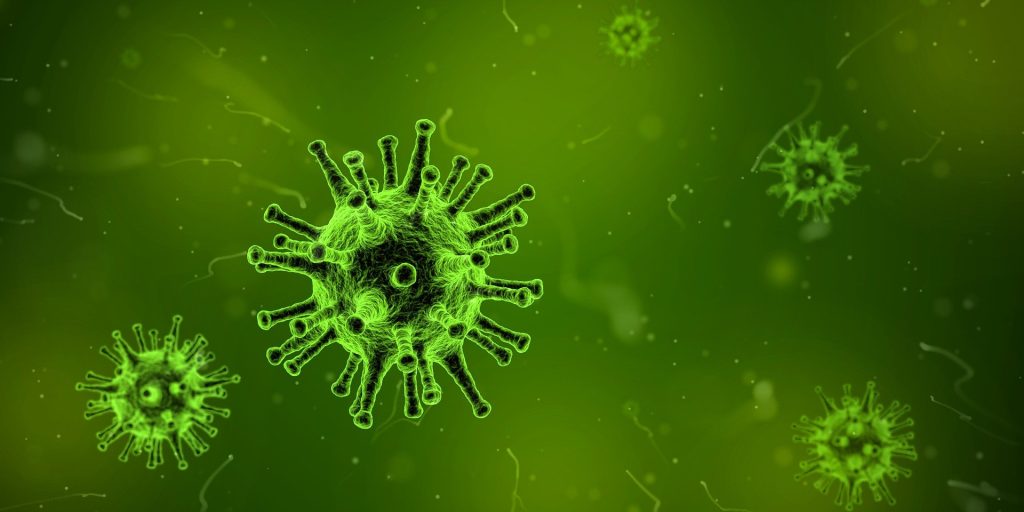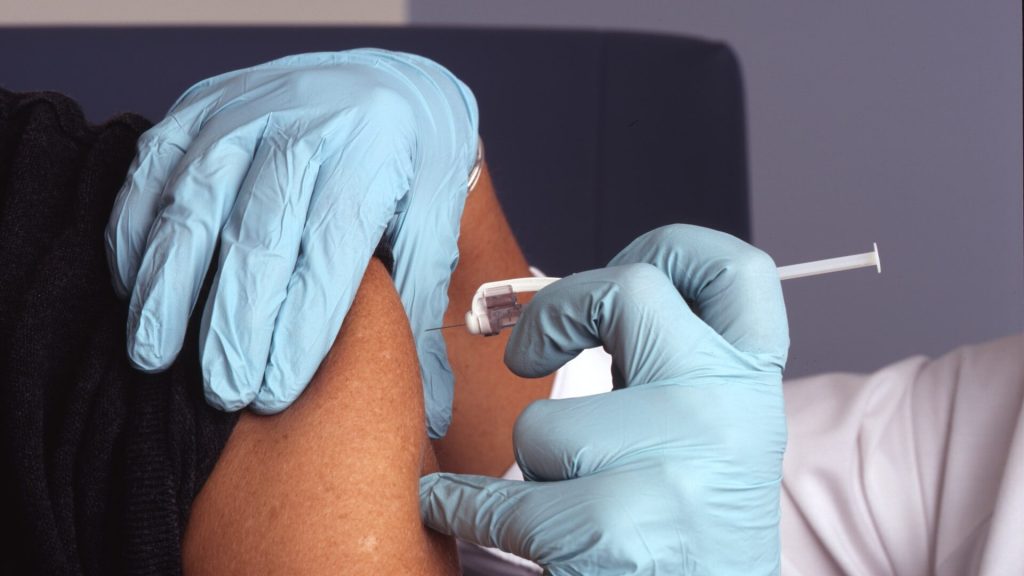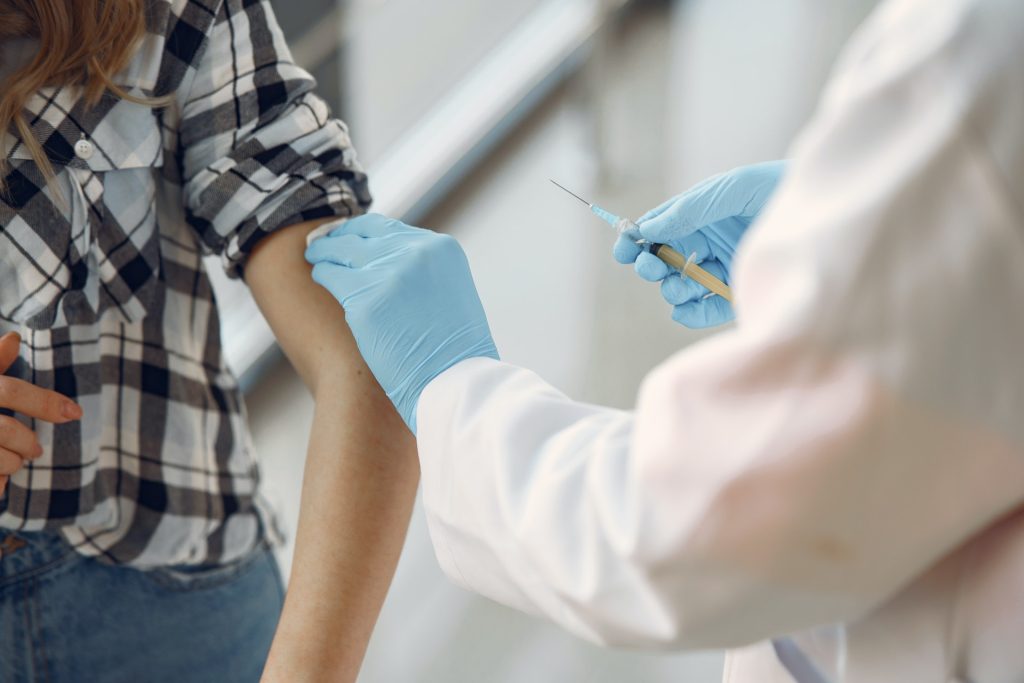Flu Vaccination – Protection Beyond Flu For Healthcare Professionals And Patients

The cooler months bring with them a surge in cases of influenza or ‘flu’. Flu infection causes up to 650 000 deaths globally each year, and the highest numbers occur in sub-Saharan Africa.1
Seasonal flu is characterised by a sudden onset of fever, cough (usually dry), headache, muscle and joint pain, severe malaise, sore throat and a runny nose. The cough can be severe and can last two or more weeks.2
South Africa’s seasonal flu usually has its highest number of recorded cases between May and September each year, with over 11 000 flu-related deaths occurring in the country annually.1 It is therefore important that healthcare professionals (HCPs) and high-risk population groups such as those living with chronic illnesses do not delay getting their flu shot this winter season.
Who is at risk of contracting severe flu, and of experiencing complications?
According to the National Institute for Communicable Diseases (NICD), the people most at risk for severe/complicated influenza include:1
- Pregnant women and women up to 2 weeks postpartum
- Young children (particularly those under 2 years of age)
- Persons over the age of 65 years
- Individuals who are morbidly obese (body mass index ≥40)
- HIV-infected individuals
- Individuals with tuberculosis
- Persons of any age with chronic diseases:
- lung diseases (e.g. asthma, chronic obstructive pulmonary disease)
- immunosuppression (e.g. those on immunosuppressive medication, or who have cancer)
- heart disease (e.g. congestive cardiac failure), except for hypertension
- metabolic disorders (e.g. diabetes mellitus)
- kidney or liver disease
- neurological and neurodevelopmental conditions
- abnormal production or structure of haemoglobin (e.g. sickle cell disease)
- Those under 18 years receiving chronic aspirin therapy
HCPs are particularly vulnerable for contracting flu: a systematic review comparing the incidence of flu in healthy adults and HCPs found a significantly higher incidence in HCPs, since they are exposed to the virus via their patients.3 The World Health Organization (WHO) adds that “Because healthcare workers are dedicated individuals, they often come to work when they are sick, increasing the risk of transmission,” and therefore recommends that all HCPs are vaccinated against seasonal flu every autumn.3
The NICD indicates that it is particularly important to protect HCPs and ensure that they are able to continue to work and to reduce any additional burden on the health system.1
Most people recover from fever and other symptoms within a week of contracting the flu, without requiring medical attention. However, among high-risk groups, and those with serious medical conditions, flu can cause severe illness or death.2
Complicated influenza includes cases requiring hospital admission and/or with symptoms and signs of lower respiratory tract infection (hypoxaemia, dyspnoea, tachypnoea, lower chest wall indrawing and inability to feed), central nervous system involvement and/or a significant exacerbation of an underlying medical condition.1
When is the best time to get vaccinated?
Dr Lourens Terblanche, Medical Head: South Africa, Sanofi Vaccines, says: “People should ideally get vaccinated against flu before the flu season begins for the most effective coverage, although vaccination at any time during the flu season can still help protect against flu infections.”
“Influenza viruses evolve constantly, so twice a year the WHO makes recommendations to update vaccine compositions. HCPs and patients who are known to be at high risk for developing severe or complicated illness as a result of contracting the flu, should prioritise immunisation against flu every year, as recommended by the NICD,” says Dr Terblanche. “The vaccine is however available to any individual from the age of 6 months to help prevent influenza infection.”
How vaccination could protect beyond flu
Flu can impact many systems in the body, so flu vaccination can provide protection where these systems would have been affected. For example, complications of flu include a 10x higher risk of having a heart attack,4 an 8x higher risk of stroke,4 and an 8x greater risk of pneumonia in children under the age of 14,5 while persons with diabetes experience a 75% increase in glycaemic events.6
According to the US Centers for Disease Control (CDC), during the 2019-2020 season, flu vaccination averted 7.5 million cases of flu, 3.7 million medical visits, 105 000 flu-associated hospitalisations, and 6 300 deaths.7
A 2021 study by the CDC also showed that among adults hospitalised with flu, vaccinated patients had a 26% lower risk of having to go into the ICU and a 31% lower risk of death from flu, compared with those who were unvaccinated.7
“Flu vaccination is also essential considering the possible co-circulation of both the flu and SARS-Cov-2 or other respiratory pathogens. However, it is important to remember that the flu vaccine will not prevent COVID-19 and vice versa; therefore, it is important to ensure that HCPs and their patients are vaccinated against both. Simultaneous infection with flu and COVID-19 can result in severe disease,8” says Dr Terblanche.
Current guidance from the Department of Health regarding administering flu and COVID-19 vaccinations at the same time is that this may be done, if they are given in different arms.9
The WHO reports that there are still a number of myths about the flu vaccine10 – myths to which HCPs are not immune – including that ‘Flu is not serious, so I don’t need the vaccine’. The WHO responds as follows: “As many as 650 000 people a year can die of the flu. This only represents respiratory deaths, so the likely impact is even higher. Even healthy people can get the flu, but especially people whose immune systems are vulnerable. Most people will recover within a few weeks, but some can develop complications including sinus and ear infections, pneumonia, heart or brain inflammation.”
“It is good to be aware of the myths surrounding flu vaccination in order to encourage high-risk individuals to have their flu vaccine timeously,” says Dr Terblanche.
The quadrivalent Vaxigrip Tetra vaccine produced by Sanofi Pasteur complies with the WHO’s Southern Hemisphere recommendations for the 2023 season11 and protects against the following strains:
∙ an A/Sydney/5/2021 (H1N1)pdm09-like virus;
∙ an A/Darwin/9/2021 (H3N2)-like virus;
∙ a B/Austria/1359417/2021 (B/Victoria lineage)-like virus; and
∙ a B/Phuket/3073/2013 (B/Yamagata lineage)-like virus.
References
1. Blumberg L, Cohen C, Dawood H, et al. (2018). Flu NICD Recommendations for the diagnosis, prevention, management and public health response. Available from: http://www.nicd.ac.za/wp-content/uploads/2017/03/Flu-guidelines-rev_-23-April-2018.pdf. Accessed October 2019.
2. World Health Organization. What is seasonal influenza? Available from: https://www.who.int/news-room/questions-and-answers/item/how-can-i-avoid-getting-the-flu Accessed 7 March 2023.
3. WHO Fact sheet for health care workers: Protect yourself and your patients from influenza. Available from: https://www.euro.who.int/__data/assets/pdf_file/0011/261857/WHO_Factsheet_Healthworker_English-rev.pdf. Accessed 16 March 2023.
4. Warren-Gash C, et al. Laboratory-confirmed respiratory infections as triggers for acute myocardial infarction and stroke: a self-controlled case series analysis of national linked datasets from Scotland. Eur Respir J. 2018; DOI: 10.1183/13993003.01794-2017
5. Kubale J, et al. Individual-level Association of Influenza Infection With Subsequent Pneumonia: A Case-control and Prospective Cohort Study. Clin Inf Dis. 2021; 73(11): e4288–e4295.
6. Samson SI, et al. Quantifying the Impact of Influenza Among Persons With Type 2 Diabetes Mellitus: A New Approach to Determine Medical and Physical Activity Impact. J Diabetes Sci Technol. 2019; 15(1):44-52.
7. CDC. Vaccine effectiveness: How well do the flu vaccines work? Available from: https://www.cdc.gov/flu/vaccines-work/vaccineeffect.htm. Accessed 14 March 2023.
8. Stowe J, et al. Interactions between SARS-CoV-2 and influenza, and the impact of coinfection on disease severity: a test-negative design. International Journal of Epidemiology 2021;1-10. doi: 10.1093/ije/dyab081.
9. Director General of Health. National COVID-19 Vaccination Programme Circular 3 of 2022 Co-administration of COVID-19 and other vaccines. Available from: https://sacoronavirus.co.za/wp-content/uploads/2022/02/Vaccination-Circular-3-of-2022-Co-administration-of-Covid-and-other-vaccines.pdf. Accessed 16 March 2023.
10. World Health Organization. 5 myths about the flu vaccine. Available from: https://www.who.int/news-room/spotlight/influenza-are-we-ready/5-myths-about-the-flu-vaccine. Accessed 8 March 2023.
11. World Health Organization. Recommended composition of influenza virus vaccines for use in the 2023 southern hemisphere influenza season. Available from:https://www.who.int/publications/m/item/recommended-composition-of-influenza-virus-vaccines-for-use-in-the-2023-southern-hemisphere-influenza-season. Accessed 16 March 2023.










